Related Research Articles

John Hoyer Updike was an American novelist, poet, short-story writer, art critic, and literary critic. One of only four writers to win the Pulitzer Prize for Fiction more than once, Updike published more than twenty novels, more than a dozen short-story collections, as well as poetry, art and literary criticism and children's books during his career.
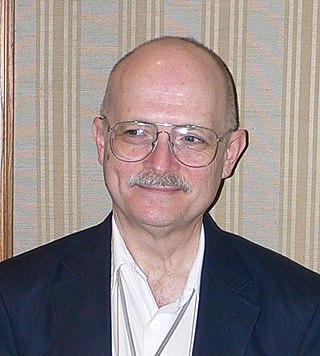
Vernor Steffen Vinge was an American science fiction author and professor. He taught mathematics and computer science at San Diego State University. He was the first wide-scale popularizer of the technological singularity concept and among the first authors to present a fictional "cyberspace". He won the Hugo Award for his novels A Fire Upon the Deep (1992), A Deepness in the Sky (1999), and Rainbows End (2006), and novellas Fast Times at Fairmont High (2001) and The Cookie Monster (2004).

The Turner Prize, named after the English painter J. M. W. Turner, is an annual prize presented to a British visual artist. Between 1991 and 2016, only artists under the age of 50 were eligible. The prize is awarded at Tate Britain every other year, with various venues outside of London being used in alternate years. Since its beginnings in 1984 it has become the UK's most publicised art award. The award represents all media.

György Kurtág is a Hungarian composer of contemporary classical music and pianist. According to Grove Music Online, with a style that draws on "Bartók, Webern and, to a lesser extent, Stravinsky, his work is characterized by compression in scale and forces, and by a particular immediacy of expression". In 2023 he was described as "one of the last living links to the defining postwar composers of the European avant-garde".
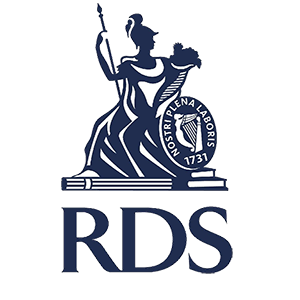
The Royal Dublin Society (RDS) is an Irish philanthropic organisation and members club which was founded as the 'Dublin Society' on 25 June 1731 with the aim to see Ireland thrive culturally and economically. It was long active as a learned society, especially in agriculture, and played a major role in the development of Ireland’s national library and museums.
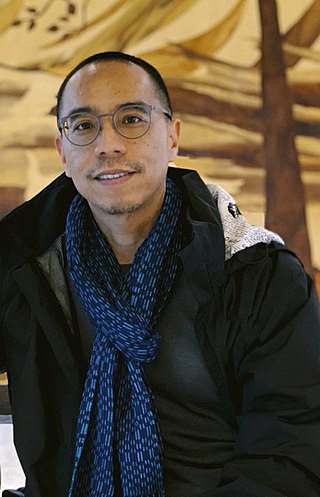
Apichatpong Weerasethakul is a Thai independent film director, screenwriter, film producer and Professor at Tama Art University in Tokyo. Working outside the strict confines of the Thai film studio system, Apichatpong has directed several features and dozens of short films. Friends and fans sometimes refer to him as "Joe".
Jennifer Chambers Lynch is an American filmmaker. The daughter of filmmaker David Lynch, she made her directorial debut with the film Boxing Helena in 1993. Following a troubled production, the film was a critical and commercial failure, with Lynch receiving a Golden Raspberry Award for Worst Director. The negative reception to her feature debut and controversy surrounding its release led to Lynch taking a 15-year hiatus from filmmaking.
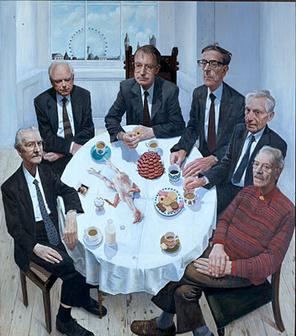
The BP Portrait Award was an annual portraiture competition held at the National Portrait Gallery in London, England. It is the successor to the John Player Portrait Award. It is the most important portrait prize in the world, and is reputedly one of the most prestigious competitions in contemporary art. Starting in 2024, the National Portrait Gallery’s portrait competition resumed under the new sponsorship of international law firm Herbert Smith Freehills.
Richard Larter was an Australian painter, often identified as one of Australia's few highly recognisable pop artists. Larter also frequently painted in a Pointillist style. He took advantage of unusual techniques with painting: using a syringe filled with paint to create his early works, and juxtaposing multiple images on to a canvas. Many of his works are brightly coloured and draw on popular culture for source materials, reproducing news photographs, film stills, and images from pornography. He was married to Pat Larter, an artist who was involved in the Mail art movement, then performance art and finally painting in a brightly coloured style similar to Richard's. The Larters emigrated to Australia in 1962. Richard Larter's pop art was less ironic than his American and English counterparts. In this Larter is similar to other noted Australian pop artists, such as, Mike Brown and Martin Sharp.

David Malcolm Storey was an English playwright, screenwriter, award-winning novelist and a professional rugby league player. He won the Booker Prize in 1976 for his novel Saville. He also won the MacMillan Fiction Award for This Sporting Life in 1960.
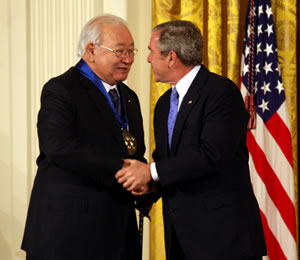
Navarre Scotte Momaday was an American novelist, short story writer, essayist, and poet. His novel House Made of Dawn was awarded the Pulitzer Prize for Fiction in 1969, and is considered the first major work of the Native American Renaissance.
The Lannan Literary Awards are a series of awards and literary fellowships given out in various fields by the Lannan Foundation. Established in 1989, the awards are meant "to honor both established and emerging writers whose work is of exceptional quality", according to the foundation. The foundation's awards are lucrative relative to most awards in literature: the 2006 awards for poetry, fiction and nonfiction each came with $150,000, making them among the richest literary prizes in the world.
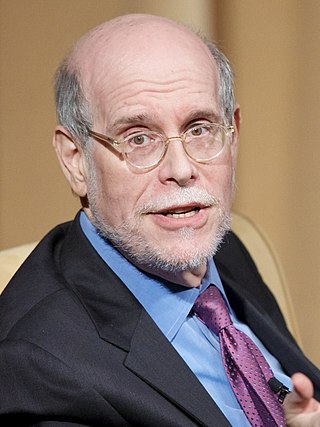
Harold Holzer is a scholar of Abraham Lincoln and the political culture of the American Civil War Era. He serves as director of Hunter College's Roosevelt House Public Policy Institute. Holzer previously spent twenty-three years as senior vice president for external affairs at The Metropolitan Museum of Art in New York before retiring in 2015.

Makinti Napanangka was a Pintupi-speaking Indigenous Australian artist from Australia's Western Desert region. She was referred to posthumously as Kumentje. The term Kumentje was used instead of her personal name as it is customary among many indigenous communities not to refer to deceased people by their original given names for some time after their deaths. She lived in the communities of Haasts Bluff, Papunya, and later at Kintore, about 50 kilometres (31 mi) north-east of the Lake MacDonald region where she was born, on the border of the Northern Territory and Western Australia.
Let's Dance 2010 was the fifth season of the Swedish version of Strictly Come Dancing. It was broadcast on the Swedish television channel TV4 starting on 8 January 2010 and ending on 26 March 2010.
Contemporary Indigenous Australian art is the modern art work produced by Indigenous Australians, that is, Aboriginal Australians and Torres Strait Islander people. It is generally regarded as beginning in 1971 with a painting movement that started at Papunya, northwest of Alice Springs, Northern Territory, involving Aboriginal artists such as Clifford Possum Tjapaltjarri and Kaapa Tjampitjinpa, and facilitated by white Australian teacher and art worker Geoffrey Bardon. The movement spawned widespread interest across rural and remote Aboriginal Australia in creating art, while contemporary Indigenous art of a different nature also emerged in urban centres; together they have become central to Australian art. Indigenous art centres have fostered the emergence of the contemporary art movement, and as of 2010 were estimated to represent over 5000 artists, mostly in Australia's north and west.
Ah Xian is a Chinese-born artist based in Sydney, Australia.

Bronwyn Joy Oliver was an Australian sculptor whose work primarily consisted of metalwork. Her sculptures are admired for their tactile nature, aesthetics, and technical skills demonstrated in their production.
Clemenger may refer to:
Jack Clemenger (1899–1964) was an Australian tennis player. He began his career in New South Wales and then moved to Victoria. In business he rose to the rank of general sales manager at Allied motors in Australia. While studying at Sydney University, Clemenger played baseball, billiards, cricket and rugby, but it was at tennis he most excelled. He had a good all round game and was better at doubles than singles. Clemenger made his debut at the 1919 Australasian championships and lost in round three to James Anderson. At the 1922 championships, Clemenger lost in the quarter-finals to Norman Peach. In 1924 he lost in round one to Garton Hone. In 1930 he lost in the quarter-finals to Harry Hopman. At Wimbledon in 1932, Clemenger lost in five sets in round three to Paul Féret. At the 1933 Australian championships, Clemenger lost in round two to Keith Gledhill. At the 1935 Australian championships, Clemenger beat Jacques Brugnon before losing to Giorgio de Stefani in round three. In 1939 he lost in round one to Colin Long. Clemenger was an Australian Davis Cup captain and selector. He started Clemenger Advertising in 1946 and was awarded the OBE.
References
- ↑ "Clemenger Award 2009". Archived from the original on 25 January 2010. Retrieved 4 January 2010.